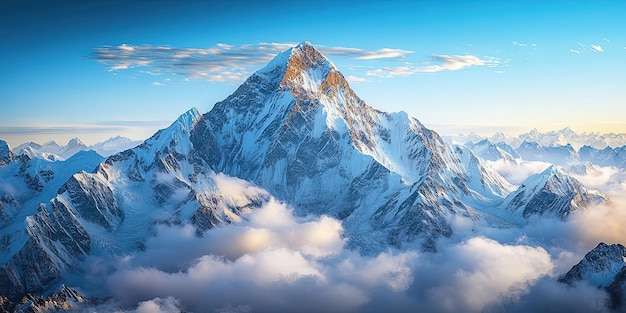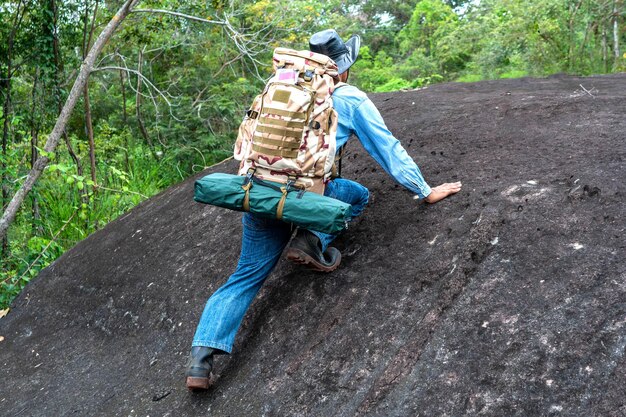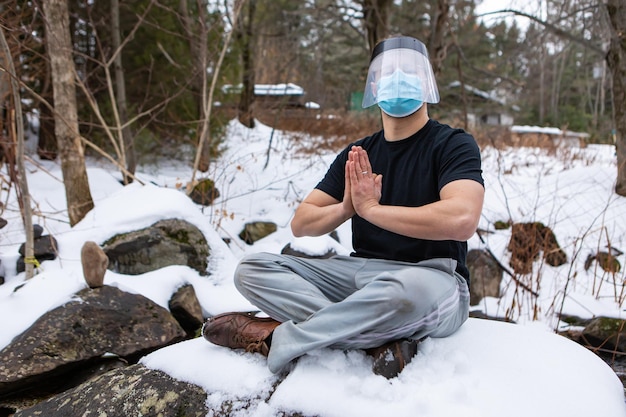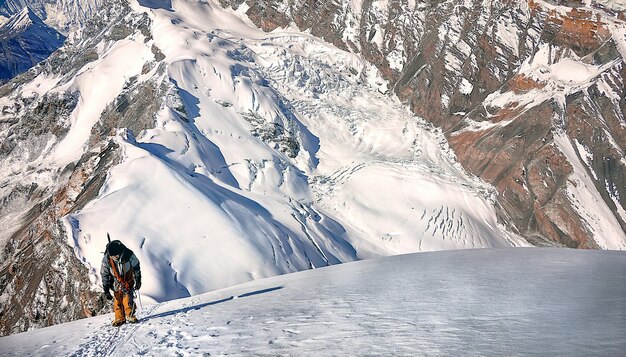A Complete Physical and Mental Preparation Guide for K2
Attempting K2, the second-highest mountain in the world, is a monumental challenge that demands extraordinary physical and mental endurance. Unlike Everest, which has a more commercialized ascent, K2 is notorious for its technical difficulty, unpredictable weather, and high fatality rate. If you are serious about summiting this mighty peak, a well-structured training plan is essential. This guide will help you understand how to train for K2: a complete physical and mental preparation guide for K2, ensuring that you are ready to take on one of the world’s most daunting climbing challenges.

A Complete Physical and Mental Preparation Guide for K2
Understanding the Physical and Mental Demands of K2
After Preparation Guide for K2, Climbing K2 is an extreme test of human endurance. It requires the ability to trek long distances, climb steep rock and ice faces, endure frigid temperatures, and function effectively in an oxygen-deprived environment. Training should focus on the following key areas:
Endurance Training: To handle long summit days and high-altitude trekking.
Strength Training: Essential for carrying heavy loads and navigating technical sections.
Altitude Acclimatization: Preparing the body for the extreme altitude of 8,611 meters.
Mental Resilience: Coping with the physical strain, isolation, and life-threatening challenges.
Endurance Training for K2
Endurance is the foundation of any successful high-altitude climb. A strong aerobic base will help you trek for hours without exhaustion. Here’s how you can build it:
1. Cardiovascular Training
Engage in cardiovascular activities at least 5-6 times per week to improve stamina and lung capacity:
Preparation Guide for K2, Running & Trail Running: Helps build endurance and strengthens leg muscles.
Preparation Guide for K2, Cycling: A low-impact way to enhance cardiovascular fitness.

Preparation Guide for K2, Hiking with a Weighted Pack: Mimics the real conditions of K2, improving endurance and strength simultaneously.
Preparation Guide for K2, Stair Climbing: Strengthens leg muscles and mimics the constant uphill motion of mountaineering.
2. Long Treks
Dedicate one day per week to a long trek with a heavy pack (20-30 kg) in rough terrain. This simulates the demands of high-altitude climbing and prepares your body for the prolonged exertion required on K2.
Strength Training for K2
Climbers need full-body strength to manage steep ascents, technical climbing, and heavy backpacks. A well-rounded strength training regimen should include:

1. Lower Body Strength
Preparation Guide for K2, Strong legs are essential for climbing steep terrain. Focus on:
Squats
Lunges
Step-ups (with a weighted pack)
Calf raises
2. Core Strength
Preparation Guide for K2, a strong core improves balance and stability on difficult routes. Include:
Planks (front and side)
Hanging leg raises
Russian twists
Deadlifts

3. Upper Body Strength
Preparation Guide for K2, you need a strong upper body to handle ice axes, ropes, and scrambling. Key exercises:
Pull-ups
Push-ups
Lat pulldowns
Dips
4. Grip Strength
Preparation Guide for K2, strong hands and fingers are essential for technical rock and ice climbing:
Farmer’s carries
Dead hangs from a pull-up bar
Squeeze trainers
Altitude Acclimatization for K2
Preparation Guide for K2, Altitude sickness is one of the biggest risks on K2. The lack of oxygen above 8,000 meters can lead to life-threatening conditions like High-Altitude Pulmonary Edema (HAPE) and High-Altitude Cerebral Edema (HACE). Here’s how to prepare:
1. Train at High Altitude
If possible, train in the mountains or at high-altitude locations. Spend time at 3,000-5,000 meters to help your body adapt to lower oxygen levels.

2. Use an Altitude Mask or Hypoxic Training
Altitude masks simulate reduced oxygen levels, improving oxygen efficiency and increasing red blood cell production.
3. Pre-Acclimatization Expeditions
Before K2, consider climbing another 6,000-7,000-meter peak, such as Aconcagua or Denali, to get your body accustomed to extreme altitudes.
Mental Resilience: The Key to Success on K2
Mental strength is just as crucial as physical preparation. Many climbers fail due to exhaustion, fear, or poor decision-making. Here’s how to build mental resilience:
1. Develop a Strong Mindset
Practice meditation and mindfulness to improve focus.
Read books and watch documentaries on successful K2 ascents.
Talk to experienced mountaineers to understand the psychological challenges of high-altitude climbs.
2. Simulate Harsh Conditions
Train in extreme weather conditions and simulate the discomfort you will face on K2—cold temperatures, strong winds, and heavy snowfall.
3. Learn to Handle Fear and Fatigue
Use visualization techniques to imagine yourself successfully summiting.
Train with sleep deprivation to mimic the exhaustion of summit day.
Expose yourself to controlled stressful situations to build mental toughness.
Expert Tips from K2 Climbers
To provide real-world insights, here are some expert tips from seasoned mountaineers who have climbed 8,000-meter peaks:
Nirmal Purja (Record-Breaking Mountaineer): “Train with purpose and push your limits before the actual climb. Simulate the physical stress you will experience at altitude.”
Ed Viesturs (First American to Summit All 14 8,000m Peaks): “Acclimatization is the key to success. The slower you go up, the better your body will adjust.”
Reinhold Messner (First to Climb Everest Without Oxygen): “Mental strength and decision-making ability can be the difference between life and death on extreme peaks.”
Final Thoughts
Climbing K2 is a once-in-a-lifetime challenge that demands peak physical fitness, mental resilience, and careful planning. By following this structured approach on how to train for K2: a complete physical and mental preparation guide for K2, you will significantly increase your chances of a successful ascent.
Remember to incorporate endurance, strength training, altitude acclimatization, and mental conditioning into your preparation. Consult with professional mountaineers, test your gear beforehand, and always listen to your body during training.
For additional information on high-altitude training, check out Altitude.org and American Alpine Institute.
Are you ready to take on the challenge of K2? Start your training today, and turn your dream into reality!
FAQs
- How long does it take to train for K2?
Training for K2 typically takes 12-18 months of endurance, strength, and altitude conditioning. - What is the best way to acclimatize for K2?
Climb other high-altitude peaks (6,000m-7,000m) and use gradual ascent techniques to adapt. - What gear is essential for K2 training?
Weighted packs, climbing ropes, altitude masks, and cold-weather gear are crucial for training. - How can I mentally prepare for K2?
Use visualization, meditation, and exposure to extreme conditions to build mental resilience.
What is the biggest challenge when climbing K2?
Unpredictable weather, technical terrain, and extreme altitude make K2 highly dangerous.






